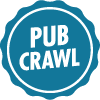The Art of Writing Copy
One of the hardest, yet most useful things I've learned in my publishing career is the art of writing copy—catalog copy, jacket copy, etc. Much like writing an essay, there is a formula and/or "trick" to it that, once discovered, becomes a lot easier to wrap your mind around. In junior high and high school, many teachers famously teach the "Five Paragraph Essay" formula. I personally never liked that formula much—I find it too restrictive—but it does serve as a good starting point. Similarly, this "copy formula" I am about outline for you is only a starting point, and you shouldn't adhere to it too religiously. (These rules can also be applied to queries, which are a type of copy as well, as after all.) Nevertheless, in the years I've been writing copy, these are the rules I've come to develop for myself.
1. Read the entire work.
Seems self-explanatory, but you wouldn't believe how many people I know write copy having only skimmed a book, or having only heard a summary of it. You can, in fact, write copy for anything—including works you've barely read—but to accurately get the tone and mood and voice across, it's obviously best to have read the entire thing. Is the book lyrical and literary? Then the flow of the sentences in the copy should reflect that. Is the book punchy and humourous? Then the copy should similarly be punchy and funny. Not that it matters, but I believe potential readers subsconciously pick up on it.
2. On the other hand, if you can only read part of the work, read the first half.
The point of good copy is to entice, not to reveal. The point is you want to get someone to pick up a book, and who's going to do that when the conflict is resolved for them in the description? A well-plotted book stacks up all the dominos in the first half, and the mid-point turn is the fingernail about to flick it and bring it all crashing down. The first half should give us the meat and bones of our copy: the characters, the stakes, and the conflict. Identify all three parts, plus the inciting incident, or the Thing that Changes Everything for the characters.
3. What's the story question?
The better question perhaps is What does the protagonist have to lose? If the stakes have been well laid out, then the story question is easier to discern. But don't confuse an external conflict for what I call the "story question". For example, if a lady character wants nothing more than to be a pilot in an age when lady pilots were frowned upon, the conflict would obviously be her fighting against the patriarchy and the Old Boys' Club working against her. We know what she stands to win (conflict) but what does she stand to lose (stakes)? Does she have a good friend whose good opinion of her will change once that friend finds out about her passion? If she has to cross-dress in order to be accepted, but she cherishes her feminine side, will she have to give up her dresses and pearls in order to pursue her dreams? The question readers would want answered (but not necessarily asked) is Can the lady pilot stay true to herself and still fly? That's the "story question" we want the readers to walk away with at the end of the copy, which will hopefully lead them to picking up and buying the book. (The example is terrible, I'm sorry, but you get the idea.) Oh, and I don't necessarily mean "story question" literally (some people had rhetorical questions, after all!). Try to imply questions with declarative sentences, rather than over-using those question marks. (E.g. "As she trades in her beloved pearls for a pair of workman's boots, Lady Pilot struggles to keep her true self hidden. She took pride in being the belle of the ball, but she also needs to take pride in her flying skills.")
4. Assemble the body of the copy.
Setup, stakes, conflict, story question. Generally in that order, but not always. Like the Five Paragraph Essay, this is the "formula" I generally stick to when writing copy. Once the body of the copy is written, then you can go ahead and write the "introduction and conclusion", which I find much harder to write than the meat of the copy. Using the "rules" above, the structure of copy looks something like this:
Enticing lead line. Perhaps two lead lines to accurately convey mood and tone. A sentence or two about setup so we can care about the characters and/or stakes. The "but when" setup, or the sentence identifying the inciting moment, when all is about to change. Describing how the inciting incident sets the protagonist on a journey, whether physical or emotional or both. Imply the story question here. An intriguing closing line, usually more factual and to the point: information about genre, style, and/or potential audience. (E.g. Hilarious, witty, and occasionally heart-breaking, This Book will appeal to fans of Known Writer.)
Generally, the shorter the copy, the better. (And in this day and age, with character limits for online catalog and copy, it's essential.) I think the sweet spot is somewhere between 250 and 400 words. Hope you found this interesting! Let me know if this helps you at all.







